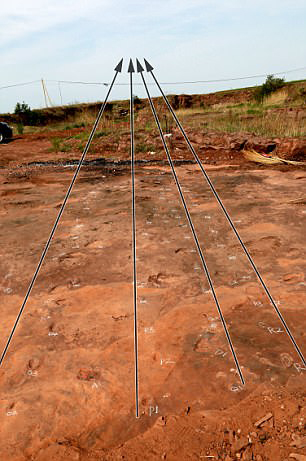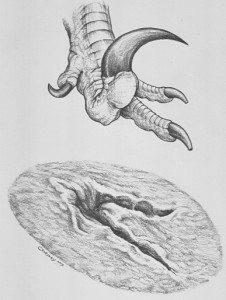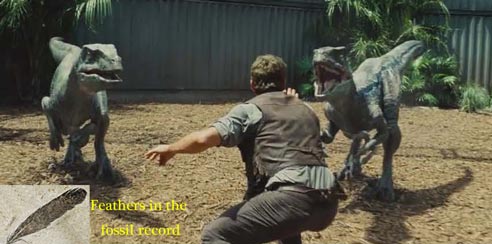More Evidence That Eumaniraptoran Dinosaurs Lived in Flocks
Social Dinosaurs from Shandong Province
Everything Dinosaur has picked up stories circulating from several Asian media outlets reporting on the discovery of around 300 dinosaur footprints and tracks in Shandong Province in north-eastern China. Some of these prints are believed to represent either dromaeosaurid or troodontid (eumaniraptoran) dinosaurs. Intriguingly, the researchers have uncovered four sets of distinctive two-toed tracks running in parallel. This suggests that four eumaniraptoran dinosaurs may have moved together, providing further evidence of possible pack behaviour in “raptors”. In total, scientists have identified around 70 two-toed tracks that indicate the presence of eumaniraptoran dinosaurs at this locality. Unfortunately, the absence of any body fossils, such as bones and teeth restricts the palaeontologists in terms of identifying precisely what sort of dinosaurs made these tracks.
Eumaniraptoran Dinosaurs
Scientists Have Identified Four Parallel Dinosaur Trackways
Picture credit: Lu Yong
Didactyl Tracks – The Second Toe Lifted Off the Ground
Some members of the eumaniraptoran clade of dinosaurs – the Dromaeosauridae and the Troodontidae for example, had an enlarged second toe claw that was held off the ground. As these types of dinosaurs moved they would have left very distinctive, two-toed prints and tracks. The finding of sets of prints indicating that the dinosaur track makers were all moving at the same speed and in the same direction suggests that these dinosaurs were social and moving in packs.
A spokesperson from Everything Dinosaur commented:
“Whilst we cannot be certain what type of dinosaur made the parallel prints, it has been speculated, based on the proportions of the toes, that these tracks could have been made by a member of the deinonychosaurian (a dromaeosaurid). The tracks were made approximately 125 million years ago and we know from the contemporary Jehol Biota of north-eastern China there were lots of “raptors” roaming about.”
The Raised Second Toe (Killing Claw) Results in a Two-toed Track
Picture credit: Matt Celeskey
Didactyl tracks have been referred to as the ichnogenus Dromaeopodus in the past. Writing in the academic journal “Cretaceous Research”, the scientists have identified two morphotypes, at this fossil site. The parallel tracks have been tentatively named as an example of the ichnospecies Menglongpus representing a deinonychosaur. The researchers have also named the tracks of an avian theropod as the ichnospecies Tatarornipes.
One of the Two-toed Tracks Assigned to the Ichnospecies Menglongpus
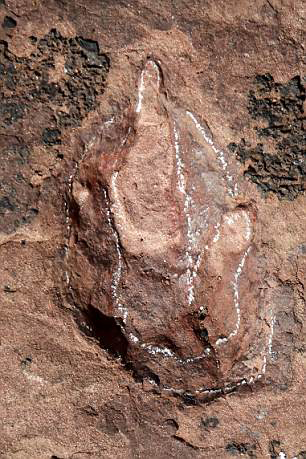
Picture credit: Lu Yong
Discovered in 2015
The fossilised footprints and tracks were discovered three years ago by Tang Yonggang, a visiting professor at Linyi University (Shandong Province). The strata at the site, in the mountainous county of Tancheng, forms part of the Dasheng Group. Over the last twelve months or so, a team of scientists led by Xing Lida, from the China University of Geosciences have mapped the hundreds of prints and tracks.
These types of two-toed tracks have been found all over the world, for example, back in 2008, Everything Dinosaur reported on a series of didactyl tracks that had been discovered in South Korea.
To read the article on the South Korean dinosaur tracks: Two-toed dinosaurs stalking South Korea.
Lida Xing commented:
“Three hundred footprints is not a shockingly large number, but the diversity in the species found at one site is extremely rare.”
An Assemblage of Fossilised Dinosaur Tracks and Prints (Shandong Province)
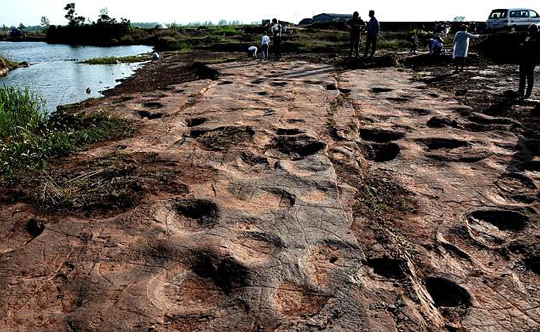
Picture credit: Lu Yong
An Early Cretaceous Dinosaur Dominated Biota with Eumaniraptoran Dinosaurs
The site preserves an Early Cretaceous dinosaur dominated biota consisting of small bipedal dinosaurs, larger Theropods and several different types of herbivore.
To read an article on the discovery of troodontid tracks in Iran: Feathered Dinosaurs from Iran.
Fans of a certain movie franchise will be delighted to hear that there is a growing body of evidence to suggest that “raptors” were sociable, pack animals.
“Jurassic World/Jurassic Park” Raptors Behaving Like a Pack
Picture credit: Universal Studios
Visit the Everything Dinosaur website: Everything Dinosaur.


